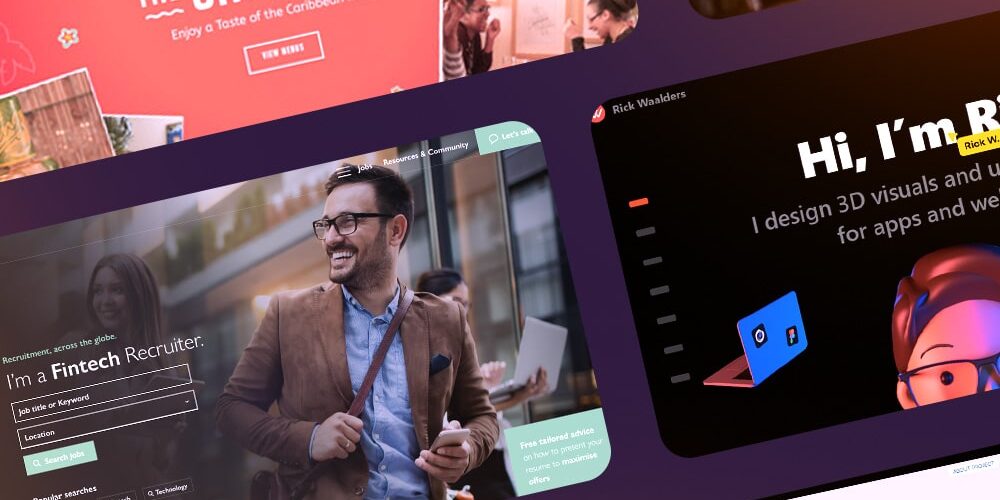Welcome to the first part of our brand new series of blogs that we will be bringing to you over the following 4 weeks. Stepping away from the realms of WordPress Security for the time being, we are now going to be delving in to the exciting world of online promotional videos. In this, Part 1 of the series, we are going to be looking at an example of a great promotional video that went viral, and consider what exactly it is about it that caused so much stir across the internet. The purpose will be to try and identify some common factors in popular videos, and what you can do to implement those elements into your own creations.
Next week in Part 2, we will be considering the importance of targeting market segments, rather than trying to make something that is overly generic (and therefore lacking focus). Part 3 will be our practical guide explaining exactly equipment and software that you will need to make a great promotional video, as well as how to edit and finish your piece to a professional standard. Finally in Part 4 we will be focussing specifically on green screens, and the benefits and practicalities of their use. We hope you enjoy this series.
What Makes A Great Promotional Video?
In short – quality.
That’s the most important part of any promotional video, and so that’s where I want to start. Your video has to be good. And, if you want it to go viral, then it has to be very, very good. Damn good, even. And that stands to reason, of course. Your promo video will only do well if it looks good and people like it.
Quality is everything when it comes to videos.
So, what makes a good quality video?
Well, firstly, a promotional video needs to be more that just an extended sales pitch. Think about it – no one likes being pitched to. “Your life is nothing without my product!! Buy it now, it’s great!!” Nah, I’ll pass thanks.
The reason? Well, people these days have had a lot of promotions in all shapes and forms stuffed down their throats. It happens on the TV, at the cinema, on the internet, in the newspapers, in magazines, in the streets, on the radio – even trailing from the back of aeroplanes in the sky. You just can’t get away from endless pitches.
And so, since we’re all so used to seeing these things, we have almost become desensitized to them. Plain pitches simply no longer work – especially in video.
We can recognize a plain pitch promo right from the very start. And it’s so frustrating that often we just stop watching.
How Not To Do It
Anyone can make this mistake – even the real big companies with massive advertising budgets. Take a look at this Samsung advert for the 840 EVO Series.
You will probably not be surprised to learn that the video was pulled. It’s just awful.
Despite the fact that the video is nicely edited, and shot and finished professionally – Samsung do have a rather large advertising budget, I’m sure – the fact is that it’s still just a plain pitch promo. It’s obvious. Patronising. Poorly acted. And actually quite sexist to boot.
The narrative is boring and predictable: “Sick of your computer taking too long to load? Try this.”
That’s the essence of it. And how many times have we seen and heard that before? Countless, and we’re bored of it. And I wouldn’t blame you if you stopped watching it long before the end of those excruciating 3 minutes.
How To Do It Right
Check out this promo from DollarShaveClub.com – and, even if you’ve seen it 10 times before, I still bet you a Bic razor and a box of popcorn that you’ll watch it again right now until the very end.
Genius, isn’t it? At the time of writing it has had over 18.5 million views. And truly deserves every single one.
So, what’s so good about it? Why does it connect with so many people?
Well, firstly – and perhaps most importantly – it’s entertaining. It’s proper laugh out loud funny. And that emotion – let’s call it mirth – is engaging. We like being entertained. We like to laugh. And if someone is making us laugh, then they have us in the palm of their hand.
But, importantly, the video is in control of what we’re laughing at – unlike the Samsung offering, which is perhaps equally hilarious but for all the wrong reasons.
It’s clever, it’s witty and it’s satirical. But, it’s actually a lot more than just that. You see, the Dollar Shave Club video actually gets things right on a lot of levels for making an engaging, attention grabbing and retaining promo that will not only hold an audience right to the very end, but will actually produce some conversions too.
So, let’s take a closer look at all the things it does right, and along the way we’ll consider how these can be transferred across to your promo.
1. It Opens With A Personal Bond
Take a look at the opening of the video again.
“Hi, I’m Mike, founder of Dollarshaveclub.com”.
He’s talking directly to the camera, which is to say he is talking directly to you as a person. He’s introducing himself first. In other words, he’s making a personal connection with the audience. It almost sounds too simple to be true. But it works. He holds your attention with his eyes as he continues to talk.
If you think how that differs from the Samsung advert – who are they talking to? Some anonymous third person. There’s no bond there. Of course, we can sort of see what Samsung were trying to do – present a cross-section of middle class computer users, who they hoped the audience would identify with on some level. But it’s just too obvious. And, because the actors are not talking to us directly, we feel detached from them.
Mike, on the other hand, even though he is obviously a rather eccentric and unusual character, we nonetheless bond and identify with him because he somehow seems more real, more human. We like him – right from those opening words.
The lesson? Make a personal bond with your audience from the outset, and retain it and develop it from start to finish.
2. Movement
Mike is constantly on the move in his video. And this works wonders for holding our attention. There is real action. Think about the script – as funny and as entertaining as it is, would it work as well if Mike were just standing there in front of a blank wall? No, it wouldn’t. And again, Samsung got this wrong.
The lesson? Keep things moving and keep things interesting. You can do this with different camera angles if you want, and use graphics and/or cartoons. But, don’t bore your audience with just one shot of bloke telling us to buy your product. We won’t.
3. Arouse Curiosity
Next up, Mike gets it right again – “So what is Dollar Shave Club?” Tell us more, Mike. We didn’t care just a moment ago – and now that question is implanted in our minds, and so we have to continue watching to satisfy our curiosity.
The Lesson? Plant the seed. Make us care about the product. Ask a question to the audience and then proceed to answer it.
4. Make The Irresistible Offer
The beauty about the Dollar Shave Club is that it actually solves a very specific, genuine problem – buying (and remembering to buy) lots and lots of expensive razors. The solution is in the offer – “For $1 a month we send you high quality razors right to your door.”
The lesson? Work out exactly what problem your product or service is solving, explain it succinctly in your video, and then say how you’re going to solve it.
5. The Art of Rhetoric
The art of rhetoric centres around the idea of predicting objections to a presented argument – in this case “Are our blades any good?” – and putting them to bed immediately – “No, they’re f**king great.”
Again, the Dollar Shave Club’s promo does this with humour – the incongruous and unexpected swearing makes us laugh. But, it’s also a f**king bold statement to make, and, as such, we trust it. We believe it. Give me those blades right now!!
The lesson? Well, there’s two here, actually. The first is to be bold. If you’re product really is as good as you think, then say so. The second is to try and predict any objections to your argument, and dedicate a section of your script to overcoming them. This allays any fears about your product.
6. Create A Mass Enemy
The “Us vs. Them” psychology is massively at play here. And again, Mike creates a mass enemy through the use of humour – “And do you like spending $20 a month on brand name razors? 19 go to Roger Federer.”
What Mike is saying is that the real reason why brand name razors are so expensive is because corporations have to hike up the prices to pay for celebrity advertising. We probably knew that anyway – but that just adds another level of personal connection with Mike and his brand.
The lesson? Try and position yourself as the knight in shining armour that will save consumers from things they naturally distrust or don’t like. Remember, you are the solution that we’ve all been waiting for.
7. Add Value
Mike also wants us to know that he’s creating jobs. This might seem like it’s shaving almost too close to the bone, but it’s a fact, and that adds value to his product. He’s giving people work – and that’s priceless.
“What were you doing last month…? Not working… What are you doing this month…? Working…”
Later, Mike does it again – “Start deciding where you’re going to stack all those dollar bills I’m saving you.”
Mike is making a big push to emphasise the value added in savings – a big stack of extra dollar bills. It practically feels like he’s paying you, rather than the other way round.
The Lesson? Never overlook the obvious. No matter where it is that your product adds value – and that doesn’t necessarily have to be on the price – then highlight it to the audience. Get a bit creative if you have to, and try and unearth some deeper value points that might otherwise be missed.
8. The Call To Action
Mike’s call to action is to party. It’s fun. And there’s a dancing bear and disco lights and dollar bills being flitted around with a leaf blower. If you want to have as much fun at this party as Mike, then you better start buying his blades.
The Lesson? Again it’s about adding value. If you can use a metaphor like Mike then so much the better. But your potential customer must really feel like they’re going to have a good time by signing up with you.
9. Close With The Memorable Tag Line
“Shave Time. Shave Money.” You’ll remember that. It rhymes for a start. It’s neat. It’s a pun. It’s great.
The Lesson? Come up with a memorable strap line for your product or service. Something that indicates what your product will do, but also how you will benefit. It doesn’t have to rhyme or be as puntastic as Mike’s but it has to convey the brand, the product and the added value all in one.
Look out next week for Part 2 of our promotional video series where we will be discussing the importance of targeting market segments.
Get more leads, make more sales, grow your brand faster.






